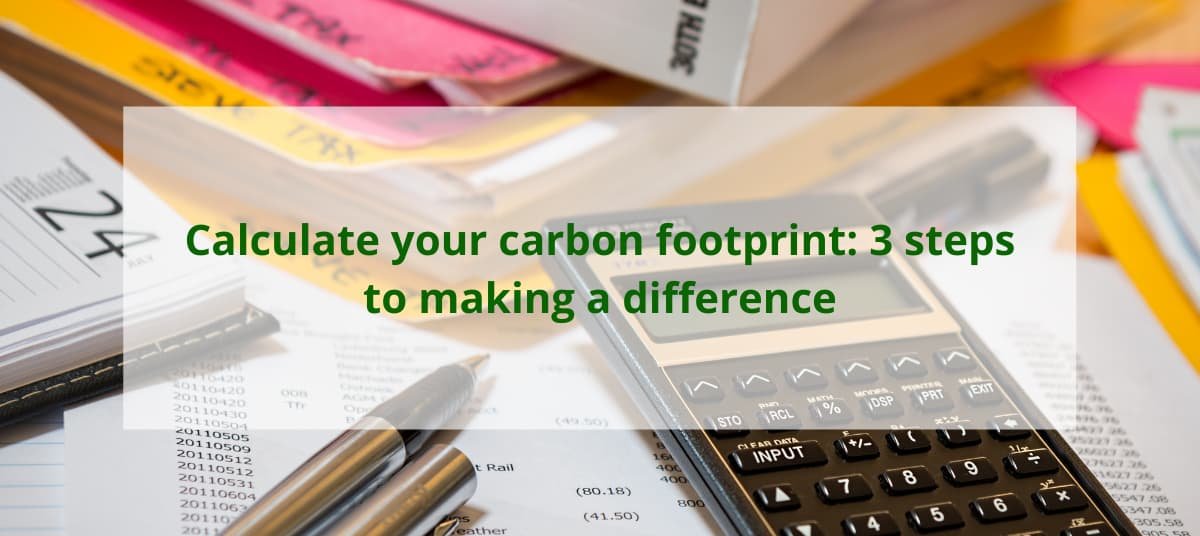Our carbon footprint in the UK is higher than quite a few other countries. If we want to reduce the impact of climate change, then it is important to understand the environmental impact that our actions have on the climate. We can do this by using a carbon footprint calculator and then use the results to identify ways reduce our impact.
As the saying goes ‘knowledge is power’ so knowing what aspects of life need to be adjusted can make a huge difference to our self confidence and the climate crisis. If you want to make a difference, then why not try out one of the calculators we recommend below.
Table of Contents
What is a carbon footprint?
Your carbon footprint is the amount of greenhouse gases emitted as a result of your activities. It a simple concept but the way that your carbon footprint is calculated depends on a number of factors.
Carbon emissions
The aim of a carbon calculator is to measure your carbon emissions you create in your day to day life. Carbon emissions come from burning fuels (e.g. petrol, diesel, natural gas or coal). A carbon calculator wont provide a 100% accurate calculation -they only give you average values. Still, average is better than none and the aim is to give you a direction for change.
Carbon dioxide

Carbon dioxide (or CO2) is one of the carbon emissions. As we know, it is responsible for trapping heat in the earth’s atmosphere. As more CO2 is generated and trapped in the earth’s atmosphere, the more heat is trapped. The key is not to add to carbon dioxide production unnecessarily. For example, carbon dioxide (and methane) are both emitted from waste so managing your waste, particularly food waste is vital for reducing emissions
Greenhouse gas emissions
We tend to focus on CO2 emissions but in reality there are a number of other gases that impact the planet such as methane, nitrous oxide and a few others. They are all considered to be greenhouse gases
What should my carbon footprint be in the UK?
The average carbon footprint for each person in the UK is about 10 tonnes CO2e per year, if you include imports and flying. Your carbon footprint may be larger or smaller than this average, depending on your lifestyle. According to carbonindependent.org, this figure is double the footprint of other countries.
There are many different ways to calculate your personal carbon footprint, but after hours of research we are recommending the three carbon footprint calculators below. We outline what is good and bad about them so you can decide which one is the most appropriate for your circumstances.
Step 1 – gather all your information
Like all calculators, a carbon footprint calculator needs data to work out your impact on the planet. Before you start, you will need to collect your lifestyle data. Some information is about your environment i.e. if you live in a large house or use a car. Other information will come from a number of sources, such as your energy bills, travel records or supermarket receipts.
The best way to collect this data is to keep a carbon footprint diary for a month. This will allow you to record all your daily activities, including the distances you’ve travelled, the type of food you’ve eaten and the type of fuel you’ve used.
If you don’t want to keep a carbon footprint diary, there are many online carbon footprint calculators which will help you to input your data.

Step 2 – complete a carbon footprint calculator
Once you have all your data, it’s time to calculate your carbon footprint. There are plenty of free online tools to choose from. A carbon calculator will measure activities such as bus travel , if you do any air travel, your car type and food choices such as eating animal products. We tried over 12 different carbon calculators and selected 3 that will help you calculate your carbon footprint effectively:
WWF footprint calculator –

This calculator is good for calculating your carbon footprint from everyday activities. It is user friendly and you are encouraged to download the WWF app at the end. We did this and the app gives you a number of challenges for you to complete.
Drawbacks: It is quite simplified and doesn’t take into account any variations there may be even in one household. Also, it doesn’t seem to include children
Footprintcalculator.org –

This is a very user friendly calculator. All you have to do is input your postcode (or zip code for the U.S) and the website does the rest. It will give you a breakdown of your carbon footprint by sector.
Some of the questions are focussed on the U.S (e.g. do you live in a luxury condominium?) but you can still work out your housing type to answer the question. There is another question that you may not know the answer to: what is the size of your accommodation? You can use your energy certificate from Gov.UK to find out the size of your residence and input the data.
Drawbacks: There is no way to adjust for regional differences so the results are not be entirely accurate. The
Carbonfootprint.com

This calculator is a little more complex than Footprintcalculator.org so in theory, you get a more accurate calculation because it offers more in-depth results. You have to input a lot of data including your transportation choices and how often you fly.
Drawbacks: There can be a lot of data entry and the results can be difficult to understand without a background in environmental science.
All of these calculators are easy to use and will help you to understand your carbon footprint. They will also provide you with advice on how to reduce your emissions.
Step 3 – make suggested changes
So you have your results from the carbon footprint calculator, what’s next?
The final step is to use the results of your carbon footprint calculator to make changes in your life. There are many ways that you can reduce your carbon footprint, but the best way to start is by making small changes. For example, you can start by using energy efficiently. If you fly, you could consider carbon offsetting – not a perfect solution but every little bit helps. You could make other changes. For example, does your electricity supplier use renewable sources to produce energy? Oil and gas energy prices are rising fast in the UK so we may need to find alternative energy sources sooner than we think.
Other calculators
Heard of the omni calculator? No, neither had we but it looks like they do a variety of ecology calculators. You can calculate your meat footprint, cryptocurrency footprint and many other footprints. The omni calculator also provide explanations of the calculator along with explanations of the facts and figures. It’s a great tool for gettring a better understanding of different activities.
If you are interested in looking at the carbon footprint of your local area, you can try the impact tool developed by Exeter University. The tool works out the carbon dioxide footprint of waste, housing, travel, food and diet as well as consumption of goods and services.
If you’re look for ways to cut your carbon footprint, check out this interesting Ted Talk offering three easy ideas to cut your footprint by 60%….
We can really make a difference by lowering individual carbon footprints. Living sustainably isn’t hard and the added bonus is that many of the changes save money too.
Have you used carbon footprint calculators? Do you find them useful? Tell us your thoughts in the comments below!


